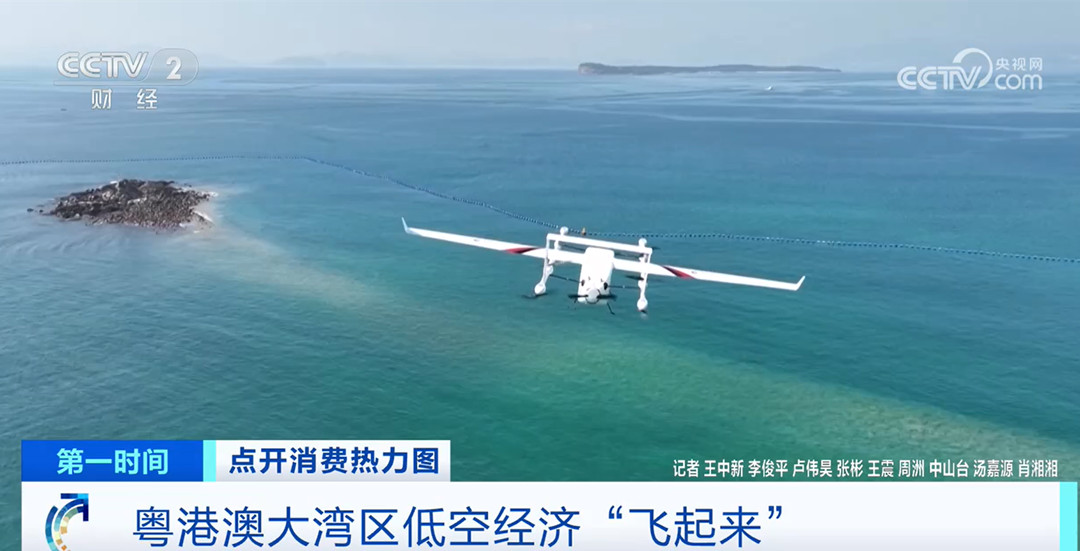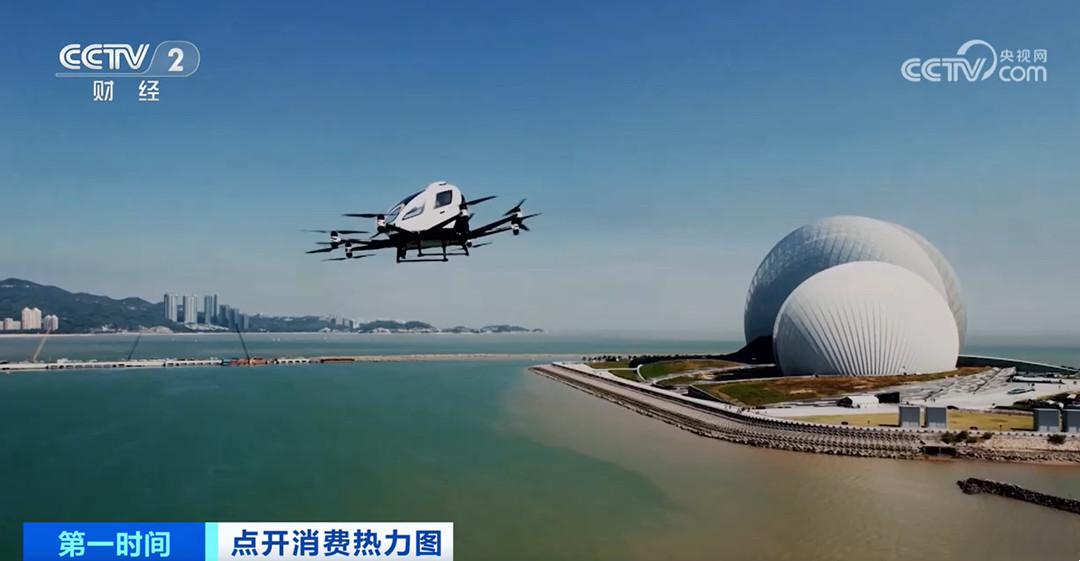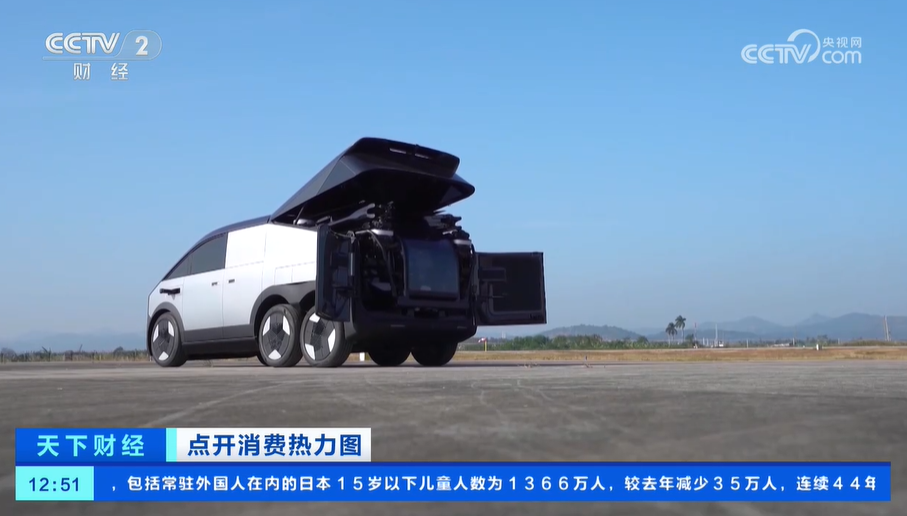CCTV News: Come and pay attention to the low-altitude economy. Air taxi test flights are on the road, express parcels are delivered quickly, and drone plant protection helps agricultural production, a variety of new business formats based on low-altitude fields are slowly unfolding.
The low-altitude economy of the Guangdong-Hong Kong-Macao Greater Bay Area "flying"

Above the Guangdong-Hong Kong-Macao Greater Bay Area, more than 20,000 cargoes are transported and flew at low altitudes every day, and an average of nearly 100 logistics drones shuttle in the air every minute. Drones allow the entire Greater Bay Area to achieve low-altitude logistics network interconnection.
Among all kinds of applications of low-altitude economy, manned flight is one of the most exciting scenarios.

Departed from Shenzhen to Zhuhai, just 20 minutes, the plane landed steadily at Zhuhai Jiuzhou Airport.
The person in charge told us that this route was opened at the end of April last year and had one flight every day. It took off from Shenzhen Nantou Airport to Zhuhai Jiuzhou Airport at 5 pm and returned at 5:35 pm. After nearly a year of operation, more than 100 flights and more than 400 passengers have flown.
At present, three low-altitude economic clusters in Shenzhen, Guangzhou and Zhuhai have been formed. Low-altitude industries have gradually become a new engine of regional economic growth, accelerating the integration of the Guangdong-Hong Kong-Macao Greater Bay Area.
Low-altitude economic equipment opens up new space for consumption
When technology has wings, low-altitude economy is flying out of new ways, express delivery falls from the sky, enjoying flowers and rushing into the sky, urban governance has the eyes of the sky, and patrol and security are sleepless for 24 hours. The application of drones and electric vertical take-off and landing vehicles is accelerating their take-off, driving the overall acceleration of the R&D, manufacturing and operation industry chain.

We experienced a new generation of low-altitude economic product-land aircraft carrier aircraft in the simulation cabin. Land aircraft carriers combine family cars and aircraft, and the products will be mass-produced and delivered in the second half of 2026. A large number of experimental test flights and land-trip tests are currently underway.
The land aircraft carrier has nearly 5,000 reservations as soon as it was launched. By the end of this year, this product will be officially pre-sale.
In terms of cultural and tourism consumption, drones can also show their skills. In Qingdao, Shandong, a "shared drone rental cabinet" is particularly eye-catching. After tourists scan the code and pay the deposit through their mobile phone, they can rent a drone equipped with a 4K high-definition camera.
In recent times, low-altitude passenger tour routes in many places such as Shanghai, Liaoning, and Sichuan have been intensively opened, allowing tourists to travel from the ground to the cloud.
The Civil Aviation Administration of China predicts that by 2025, the market size of my country's low-altitude economy will reach 1.5 trillion yuan, and by 2035, it is expected to reach 3.5 trillion yuan.
Unmanned aerial vehicles and electric vertical take-off and landing vehicles continue to expand new application scenarios
The most important carriers in low-altitude economy are drones and electric vertical take-off and landing vehicles. In addition to the application scenarios we often see, they actually have more uses: earthquake rescue lights up the night sky, high-rise fire extinguishing and protecting safety, independent equipment installation, alien exploration and other rich application scenarios.
The Ministry of Industry and Information Technology expects that the number of drones in my country will exceed 10 million in the next five years.

